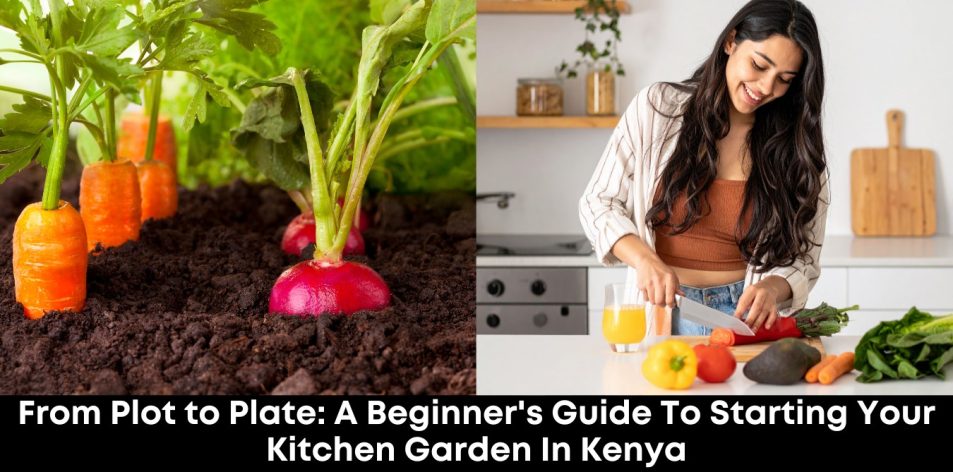Cultivating Your Own Fresh Produce for a Healthy Home
Starting a kitchen garden on your own land in Kenya is a rewarding project that offers immense benefits, from ensuring a fresh supply of healthy produce to saving money and enjoying a fulfilling outdoor activity. With Kenya’s varied climates and fertile soil in many regions, the potential for a thriving home garden is huge. This step-by-step guide will walk you through the essential stages of establishing your small kitchen garden, helping you transform a piece of land into a source of food and joy.
Step 1: Planning and Location
Choose the Right Spot
The location of your garden is crucial. Select an area on your land that receives at least six to eight hours of direct sunlight daily. This is vital for most vegetables and herbs to grow well.
Assess Water Access
Ensure your chosen spot is easily accessible to a water source, whether it’s a tap, borehole, or rainwater harvesting system. Proximity to water will make daily watering much easier.
Start Small
For a beginner, it is best to start small. Choose a manageable area, perhaps a metre by two metres (3ft x 6ft), or focus on a few raised beds or containers. This prevents feeling overwhelmed and allows you to learn the basics before expanding.
Step 2: Soil Preparation
Test and Improve Your Soil
The quality of your soil determines the health of your plants. In many areas of Kenya, the soil may be clay-heavy or lacking in organic matter. You need to create a well-draining and nutrient-rich environment.
- Clear the Area: Remove any weeds, rocks, and debris from the designated garden spot.
- Introduce Organic Matter: Mix generous amounts of well-rotted compost, manure, or other organic matter (like dried leaves) into the top 30cm (12 inches) of soil. This improves drainage, soil structure, and nutrient retention.
- Consider Raised Beds: If your soil is particularly difficult (like heavy black cotton soil), building raised garden beds and filling them with a mix of purchased topsoil and compost is an excellent, low-effort alternative.
Step 3: Choosing What to Plant
Select Suitable Crops
Choose vegetables and herbs that are commonly used in your kitchen and that thrive in the Kenyan climate. Consider starting with easy-to-grow staples.
- Vegetables: Kales (Sukuma Wiki), Spinach, Tomatoes, Capsicum (Pilipili Hoho), Onion, African Nightshade (Managu), and Cabbages are all excellent choices.
- Herbs: Coriander (Dhania), Mint, Rosemary, and Thyme grow well in containers or small garden plots and are essential for cooking.
- Timing: Be mindful of the planting season (wet or dry season) and consult local farming calendars for the best times to plant specific crops.
Step 4: Planting and Initial Care
Sowing Seeds or Transplanting Seedlings
You can either sow seeds directly into the garden bed or buy young seedlings from a reputable nursery (which is often easier for beginners and provides a quicker harvest). Follow the spacing instructions on the seed packet or seedling tray carefully.
Watering
Water your garden consistently and deeply, especially in the early stages and during dry periods. Water the base of the plant, avoiding wetting the leaves, which can promote fungal diseases. Early morning watering is generally recommended to reduce evaporation.
Mulching
Once your plants are established, apply a layer of mulch (like dry grass clippings, straw, or wood chips) around the base of the plants. Mulching is highly effective in retaining soil moisture, suppressing weeds, and regulating soil temperature.
Step 5: Ongoing Maintenance and Pest Control
Weeding
Weeds compete with your vegetables for water and nutrients. Weed regularly and gently by hand to keep the garden clean and healthy.
Pest Management
Inspect your plants daily for signs of common pests (like aphids or caterpillars). Use natural pest control methods, such as a simple spray made from soapy water or neem oil, before resorting to stronger chemicals.
Harvesting
Harvest your vegetables and herbs as soon as they are ready. Regular harvesting encourages the plants to continue producing more food.
A Journey of Growth and Nourishment
Starting a kitchen garden is a fulfilling journey that connects you directly to the source of your food. By preparing your soil correctly, choosing the right plants, and maintaining consistent care, you will successfully cultivate a green space that provides fresh, healthy produce and a wonderful outdoor activity for the entire family. It is an investment in your home, your health, and your well-being.

